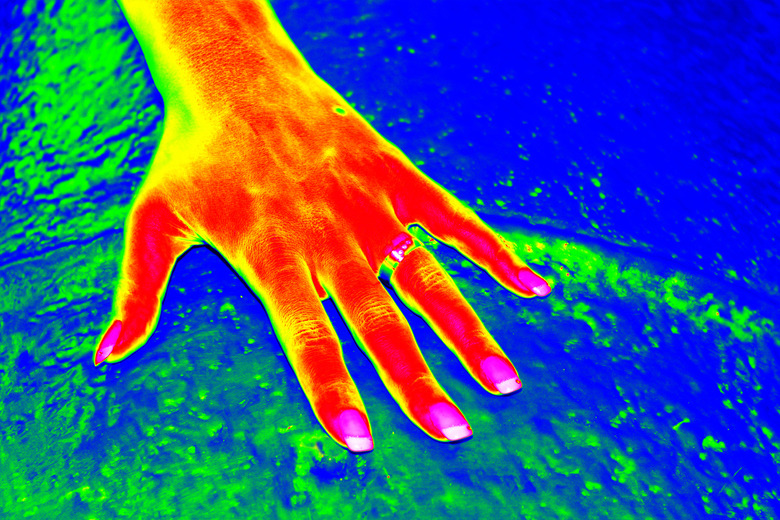Differences Between Infrared Light & Radio Waves
As you walk barefoot on the sand, on a hot day, you will feel infrared light on your feet, even though it is not visible to you. While you surf the web, you are receiving radio waves. Infrared light and radio waves are different in many ways, especially in in their utilization. Ships, aircrafts, corporations, the military, law enforcement personnel and the public, heavily rely on radio waves and infrared light.
Infrared Light
Infrared Light
Infrared light is part of the electromagnetic spectrum, and is an electromagnetic form of radiation. It comes from heat or thermal radiation, and it is not visible to the naked eye. More radiation is produced as temperature increases. Ice emits infrared light. Charcoals when hot, will not glow, or emit visible light; however, you will feel the infrared heat that it generates. There are three types of infrared light, near, mid and far. Near infrared light is microscopic. Asteroids radiate most of their infrared light in the mid infrared spectrum. According to NASA, far infrared light is thermal. Humans can feel this type of radiation, from sunlight, fire, a radiator or warm sand. Although humans cannot see infrared light, a rattlesnake can detect infrared light.
Radio Waves
Radio Waves
According to NASA, radio waves have the longest wavelengths in the electromagnetic spectrum; they emit low frequency and low energy light. Although invisible, radio waves are used daily, this includes shortwave radio, aircraft and shipping bands, AM radio, TV and FM radio. The various sources of radio waves are stars, gases or a radio station.
The Difference between Radio Waves and Infrared Light
The Difference between Radio Waves and Infrared Light
According to NASA, radio waves have a longer wavelength than infrared light, in the electromagnetic spectrum. Radio waves are able to reach the earth's surface, unlike most infrared light. Majority of what is contained in the universe, including people, emit infrared light. Stars, the sun, black holes and neutron stars create magnetic fields, which creates radio waves. According to Harvard University, radio waves and infrared light are fundamentally different in wavelengths, frequency and energies of light. Radio waves are used for many things each day, this includes communication, cell phone use, internet, cable television and security alarm systems. Infrared light only functions through line of sight, whereas radio waves can effectively be used from a long distance. A remote control uses infrared light to change the channel on your TV, while radio waves are used to receive TV shows. If you want to communicate through the use of infrared technology, you will not be regulated; however, if you want to operate a radio station, you must obtain a Federal Communications Commission (FCC) license. According to the National Radio Astronomy Observatory (NRAO), devices used to detect infrared light and radio waves are designed differently because the wavelengths differ significantly.
References
Cite This Article
MLA
Stein, Jeff. "Differences Between Infrared Light & Radio Waves" sciencing.com, https://www.sciencing.com/differences-infrared-light-radio-waves-6851823/. 13 March 2018.
APA
Stein, Jeff. (2018, March 13). Differences Between Infrared Light & Radio Waves. sciencing.com. Retrieved from https://www.sciencing.com/differences-infrared-light-radio-waves-6851823/
Chicago
Stein, Jeff. Differences Between Infrared Light & Radio Waves last modified March 24, 2022. https://www.sciencing.com/differences-infrared-light-radio-waves-6851823/
